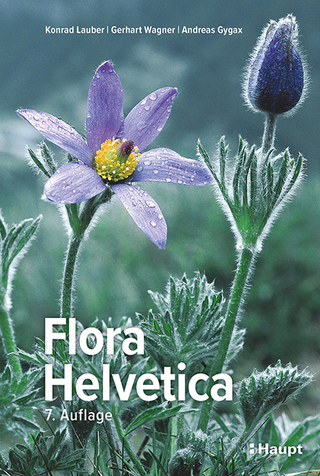
Plant Breeding: Past, Present and Future
Springer International Publishing (Verlag)
978-3-319-23284-3 (ISBN)
This book aims to help plant breeders by reviewing past achievements, currently successful practices, and emerging methods and techniques. Theoretical considerations are also presented to strike the right balance between being as simple as possible but as complex as necessary.
The United Nations predicts that the global human population will continue rising to 9.0 billion by 2050. World food production will need to increase between 70-100 per cent in just 40 years. First generation bio-fuels are also using crops and cropland to produce energy rather than food. In addition, land area used for agriculture may remain static or even decrease as a result of degradation and climate change, despite more land being theoretically available, unless crops can be bred which tolerate associated abiotic stresses. Lastly, it is unlikely that steps can be taken to mitigate all of the climate change predicted to occur by 2050, and beyond, and hence adaptation of farming systems and crop production will be required to reduce predicted negative effects on yields that will occur without crop adaptation. Substantial progress will therefore be required in bridging the yield gap between what is currently achieved per unit of land and what should be possible in future, with the best farming methods and best storage and transportation of food, given the availability of suitably adapted cultivars, including adaptation to climate change. My book is divided into four parts: Part I is an historical introduction; Part II deals with the origin of genetic variation by mutation and recombination of DNA; Part III explains how the mating system of a crop species determines the genetic structure of its landraces; Part IV considers the three complementary options for future progress: use of sexual reproduction in further conventional breeding, base broadening and introgression; mutation breeding; and genetically modified crops.
John E. Bradshaw, PhD, spent his whole professional life as plant breeder and geneticist at the Scottish Crop Research Institute (SCRI, formerly the Scottish Plant Breeding Station and now the James Hutton Institute). He completed his career as Head of Potato Breeding and Manager of the Potato Genetics Programme, funded by the Scottish Government. He has worked on barley, brassicas (kale, swedes and turnips) and potatoes; doing research on the applications of genetics to plant breeding methods as well as breeding two kale and three swede cultivars, and contributing to the breeding of four more swedes, a turnip, and 27 potatoes. His research covered methods of kale population improvement, the genetic basis of heterosis in swedes, the theory and practice of linkage and QTL analysis in tetraploid potatoes, and breeding for quantitative resistance to pests and diseases (clubroot in kale, powdery mildew in swedes, and late blight and cyst nematodes in potatoes). Dr. Bradshaw is an Honorary Fellow of the Indian Potato Association and an Honorary Associate of the James Hutton Institute. He also holds Honorary Membership of EUCARPIA, European Association for Research on Plant Breeding (in recognition of his outstanding activity in the field of plant breeding science, and his considerable contributions to improving international contacts in plant breeding research). He was awarded the prestigious 2010 British Potato Industry Award in recognition of his outstanding contribution to potato research and knowledge transfer. He has published 93 refereed papers in peer reviewed journals, 53 other articles and 10 book chapters. He has also edited one and co-edited two books including Root and Tuber Crops (Book 7 of the Handbook of Plant Breeding Series) with Springer.
Domestication, Dispersion, Selection and Hybridization of Cultivated Plants.- Scientific Breeding in the 20th Century and Future Goals.- DNA and the Origin of Variation.- Mendelian Genetics and Linkage Maps.- Gene Expression and Selection of Major Genes.- Quantitative Genetics and Genomic Selection.- Genotype × Environment Interactions and Selection Environments.- Genome Evolution and Polyploidy.- Genetic Structure of Landraces.- Open-Pollinated and Synthetic Cultivars from Population Improvement.- Clonal Cultivars from Multistage Multitrait Selection.- Hybrid Cultivars from Inbreeding and Crossbreeding.- Inbred Line Cultivars and Mixtures from Hybridization and Inbreeding.- Genetic Basis of Heterosis and Inbred Line versus Hybrid Cultivars.- Use of Sexual Reproduction in Base Broadening and Introgression.- Mutation Breeding.- Genetically Modified Crops.- Durable Resistance to Pests and Diseases.- Way Ahead.
| Erscheint lt. Verlag | 15.3.2016 |
|---|---|
| Zusatzinfo | XXVIII, 693 p. 82 illus., 56 illus. in color. |
| Verlagsort | Cham |
| Sprache | englisch |
| Maße | 155 x 235 mm |
| Themenwelt | Naturwissenschaften ► Biologie ► Botanik |
| Schlagworte | abiotic stress • Biomedical and Life Sciences • Climate Change/Climate Change Impacts • Climate change impacts • Disease resistance • food production • genetically modified crops • global climate change • Plant Breeding/Biotechnology • plant genetics & genomics • Plant Genetics & Genomics • seed |
| ISBN-10 | 3-319-23284-3 / 3319232843 |
| ISBN-13 | 978-3-319-23284-3 / 9783319232843 |
| Zustand | Neuware |
| Haben Sie eine Frage zum Produkt? |
aus dem Bereich


